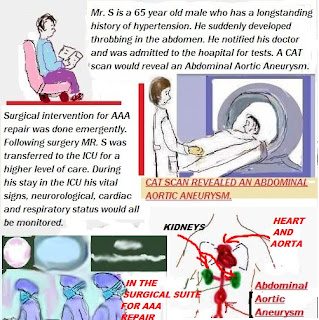Above is an example of the nursing process. This is described as having five steps. A - assessment D - diagnosis P - planning I - implementation E - evaluation Learn more : Care planning ASSESSMENT When a patient is admitted to the hospital or healthcare facility, an assessment is usually done by the nurse assigned. Documentation of the history and physical, allergies,vital signs are all included and any other relevant information. DIAGNOSIS The doctor questions and examines the patient. Tests are ordered based on symptoms. When a diagnosis is made, the doctor writes orders to be carried out. PLANNING This process is completed by the nurse gathering data and initiating the care plan. IMPLEMENTATION The RN works with the other staff members like therapists, to implement the plan of care. EVALUATION The nurse is responsible for evaluation and documentation of patient progress based on the plan of care. Learn more: The New nurse and care planning




